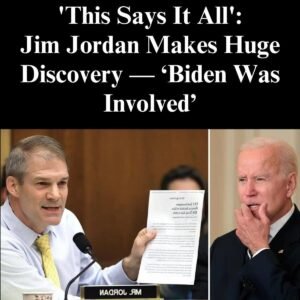A government watchdog has raised serious concerns about the Biden administration’s use of an autopen—a machine that replicates a signature—to sign nearly all of President Joe Biden’s executive orders. This claim, detailed in a report by the Oversight Project, questions the authenticity of these signatures and whether the president was personally involved in key policy decisions.
The report, associated with the Heritage Foundation, has fueled speculation about who was truly responsible for enacting these executive orders. Critics argue that this practice could have allowed unelected officials to influence policy without transparent oversight, raising concerns about executive accountability.
One of the most striking allegations is that every executive order under Biden—except his withdrawal letter from the 2024 presidential race—bears an autopen-generated signature. This discrepancy has led to speculation that the president may not have been personally approving major decisions.
Autopens are not new in government. They have been used by past presidents to sign documents efficiently. However, their use for significant executive orders has raised legal and political concerns, especially regarding the extent of the president’s direct involvement.
Legal experts note that while autopen use is not illegal, it is generally expected that a president personally reviews and approves critical policy decisions. Widespread reliance on this device, some argue, could undermine the legitimacy of executive actions.
House Speaker Mike Johnson and Missouri Attorney General Andrew Bailey have voiced strong concerns about this practice. They question whether the extensive use of autopen signatures indicates a broader issue with executive oversight and decision-making.
Bailey has called for a Department of Justice investigation, arguing that Biden’s aides may have concealed signs of cognitive decline. He suggests that this could make many of Biden’s final executive actions legally questionable.
The Oversight Project’s report goes further, claiming that “whoever controlled the autopen controlled the presidency.” This implies that key executive decisions may have been made by staff rather than the president himself.
A major focus of the controversy is the clear difference in Biden’s signature on his withdrawal letter compared to his executive orders. Analysts suggest this indicates he personally signed only politically sensitive documents while routine policies were executed via autopen.
Johnson recalled an Oval Office meeting where Biden appeared unaware of an executive order pausing liquefied natural gas exports. This has fueled further speculation that he was detached from certain policy decisions.
Some legal scholars argue that the use of an autopen does not automatically mean the president was uninvolved. However, combined with reports of his apparent unawareness of major decisions, it raises significant concerns.
The debate has also sparked renewed discussion about the 25th Amendment, which outlines the process for addressing presidential incapacity. Bailey suggests that Biden’s cognitive state may have warranted invoking this provision.
As scrutiny intensifies, there are growing calls for legislative reforms requiring greater transparency in autopen usage. Some lawmakers propose mandatory disclosures whenever an autopen is used to sign executive orders.
Public trust in government relies on transparency. If executive actions were carried out without Biden’s direct oversight, it could erode confidence in the presidency and fuel deeper concerns about accountability.
The controversy highlights a broader debate over the balance of power within the executive branch. As investigations continue, the question remains: was Biden truly in control of his administration’s major policy decisions?
